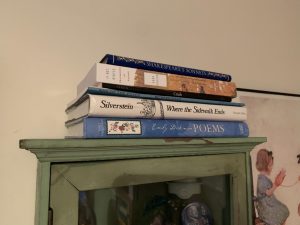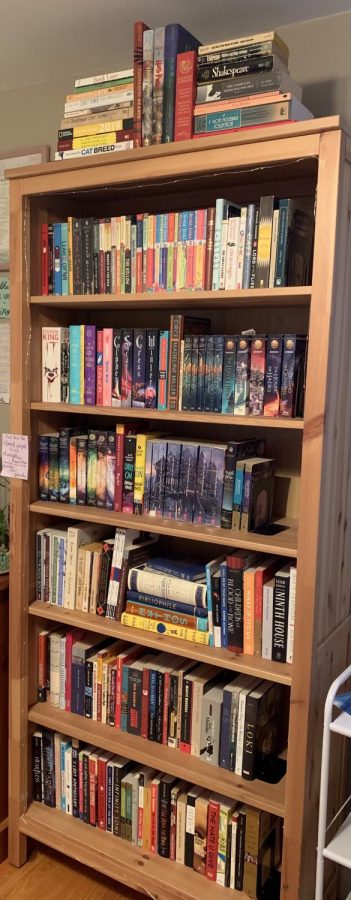Unique Ways to Organize Your Bookshelf
My bookshelf, first sorted by whether I’ve read them, then alphabetically
April 11, 2021
If you own a lot of books, you’ve probably run into the issue of organization. How do you decide which books are similar enough to group together or in what order? A well organized bookshelf is not only more convenient, but can also end up being very aesthetically pleasing and personal.
There are, of course, the basic methods, like by genre or alphabetically, and while these do work and are extremely efficient, they can get boring if you care a lot about your bookshelf’s appearance and aren’t really necessary for a smaller collection.
My personal favorite way to organize my books is by whether or not I have read them yet. This method is great is you get a lot of books well before you know you’ll be able to read them as it makes it easy to see your options for a new read. The only downsides I have found are that you will probably have to sort them further, as this would only split them into two chunks, and that there may be some “gray area” books. These are books that you may not sit down and read cover to cover, like collections of poetry or short stories, or picture-based nonfiction books. However, I have found both of these issues to be easily solvable by alphabetizing each section, and making a third space for books in that gray area.

If you read mostly history or historical fiction, a great unique way to organize is by the story’s time period. This also works if you read a lot of classics from different eras. Having them sorted in this way allows you to see literature across time, sitting right there on your shelf. I imagine this method would be especially useful in a large library consisting of historical material.
Basing your organizational system on the location of the story similarly makes for an interesting look. However, having tried this method, I have found that it has more downsides than benefits. If you have a book taking place in many locations or a fantasy world, or if you haven’t read it yet and don’t know where it takes place, it can be very difficult to make work. But if these aren’t issues for you and your personal collection and you are able to make it work, I think it could be quite cool.
If organization is less of a concern to you and you mainly want your shelf to look pretty, there are honestly way more options open to you. Grouping books by similar heights creates a nice clean look. And of course, there’s always sorting by color or material of the cover. The main issue I have found with these is, as someone with many series of books, it can be annoying to have to split up books that are parts of the same story because their spines are different colors. I would only really recommend these techniques if you have a smaller collection or if you don’t have many book series.
Ultimately, organize your shelf however you find it to be most helpful and aesthetically pleasing. Experiment with different methods until you find one that works, and don’t feel like you have to keep it one way forever. You could even try blending multiple techniques together to create something you’re happy with.






